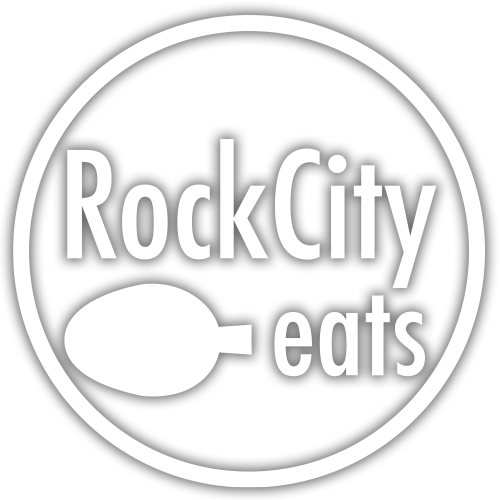Restaurants are inching closer to being allowed to reopen their dining rooms in Arkansas. All signs from the governor’s office point to restrictions being lifted in early May. As positive as this sounds for providing some relief for the restaurant industry, reopening has the potential to introduce as many issues as the original closing.
Federal guidelines, which Arkansas will most likely follow, are laying out a 3 step approach for reopening restaurants. Phase one will allow for restaurants to open up with social distancing in place (think a minimum of 6 feet between tables) and a maximum occupancy of 10 guests at a time. Phase two will allow for continued social distancing, but an overall capacity of 50 guests at a time. Phase three will open restaurants back up to full capacity.
It should be noted that there is no specific timeline between each of these phases noted, only that numbers continue to drop in total COVID cases in the area.
The big issue that restaurants will have to worry about is the decreased capacity. Most local restaurants in the area have anywhere from a 50-150 seating capacity (sometimes more). The initial guidelines of only allowing 10 guests in the restaurant at a time, it still makes the dining room functionally closed. Guests would be able to enter and pick up orders, but not much more.
Even at the 50 person capacity guidelines, it would still cut the capacity of most local restaurants in half at best. So they would be working with half or less of the total potential revenue for the restaurant.
Talking with local owners, this has been a big worry. Many of the local restaurants have been able to request delays in leases, utilities, and other payments due. Once restaurants are “allowed to open”, many believe these obligations will need to be met because they are technically allowed to reopen. It creates a situation where local restaurants have a small fraction of their total potential revenue while needing to fulfill all of their financial obligations. It creates a situation where more restaurants might be forced to close for good during the reopening period than during the COVID shut down.
There is also the public perception to take in mind. Many guests will not feel comfortable yet going back into a dining room. I fully expect takeout, curbside pickup, and delivery to be the normal mode of interacting with restaurants for the foreseeable future. Restaurants will need to continue to come up with creative ways to reach guests and provide to them outside of the traditional restaurant setting.
Also, there is the possibility that during the COVID shutdown and the limited capacity reopening process that dining behaviors simply change for good. I think if this happens fast-casual style restaurants will see permanent declines in dine-in customers, having more opt for take out and delivery. Dine-in could be reserved for special occasions, and because of it only the more high-end restaurants ever see dining numbers return to anywhere near normal.
If this happens restaurants will have to rethink how they setup dining rooms and how they handle customer flow and service offerings. Staffing will also shift dramatically.
There is also the entire bar component of the reopening procedures. Under federal guidelines, bars do not really reopen until phase three. It will be interesting to see how Arkansas interprets this guideline due to our liquor laws that require bars to be a part of restaurants instead of free-standing (although that is very loose in some cases). Will restaurants be able to operate their mixed drink bar service initially, or will this be delayed?
There are a number of other factors that could impact restaurants. An often theorized second wave could open up restaurants partially, only to see them forced to close again. For many local establishments, this would spell doom. Secondly, if restaurants are going to have limited capacities, they will have to think about how to enforce that. Most restaurants agree that some sort of reservation system is going to be needed to maintain capacity limits, even for casual restaurants that have never used reservations before.
All of these are challenges restaurants need to plan for in the coming days as reopening procedures are announced. Diners will also have to be patient with restaurants as they navigate a completely new way of doing things yet again.
Federal guidelines, which Arkansas will most likely follow, are laying out a 3 step approach for reopening restaurants. Phase one will allow for restaurants to open up with social distancing in place (think a minimum of 6 feet between tables) and a maximum occupancy of 10 guests at a time. Phase two will allow for continued social distancing, but an overall capacity of 50 guests at a time. Phase three will open restaurants back up to full capacity.
It should be noted that there is no specific timeline between each of these phases noted, only that numbers continue to drop in total COVID cases in the area.
The big issue that restaurants will have to worry about is the decreased capacity. Most local restaurants in the area have anywhere from a 50-150 seating capacity (sometimes more). The initial guidelines of only allowing 10 guests in the restaurant at a time, it still makes the dining room functionally closed. Guests would be able to enter and pick up orders, but not much more.
Even at the 50 person capacity guidelines, it would still cut the capacity of most local restaurants in half at best. So they would be working with half or less of the total potential revenue for the restaurant.
Talking with local owners, this has been a big worry. Many of the local restaurants have been able to request delays in leases, utilities, and other payments due. Once restaurants are “allowed to open”, many believe these obligations will need to be met because they are technically allowed to reopen. It creates a situation where local restaurants have a small fraction of their total potential revenue while needing to fulfill all of their financial obligations. It creates a situation where more restaurants might be forced to close for good during the reopening period than during the COVID shut down.
There is also the public perception to take in mind. Many guests will not feel comfortable yet going back into a dining room. I fully expect takeout, curbside pickup, and delivery to be the normal mode of interacting with restaurants for the foreseeable future. Restaurants will need to continue to come up with creative ways to reach guests and provide to them outside of the traditional restaurant setting.
Also, there is the possibility that during the COVID shutdown and the limited capacity reopening process that dining behaviors simply change for good. I think if this happens fast-casual style restaurants will see permanent declines in dine-in customers, having more opt for take out and delivery. Dine-in could be reserved for special occasions, and because of it only the more high-end restaurants ever see dining numbers return to anywhere near normal.
If this happens restaurants will have to rethink how they setup dining rooms and how they handle customer flow and service offerings. Staffing will also shift dramatically.
There is also the entire bar component of the reopening procedures. Under federal guidelines, bars do not really reopen until phase three. It will be interesting to see how Arkansas interprets this guideline due to our liquor laws that require bars to be a part of restaurants instead of free-standing (although that is very loose in some cases). Will restaurants be able to operate their mixed drink bar service initially, or will this be delayed?
There are a number of other factors that could impact restaurants. An often theorized second wave could open up restaurants partially, only to see them forced to close again. For many local establishments, this would spell doom. Secondly, if restaurants are going to have limited capacities, they will have to think about how to enforce that. Most restaurants agree that some sort of reservation system is going to be needed to maintain capacity limits, even for casual restaurants that have never used reservations before.
All of these are challenges restaurants need to plan for in the coming days as reopening procedures are announced. Diners will also have to be patient with restaurants as they navigate a completely new way of doing things yet again.





